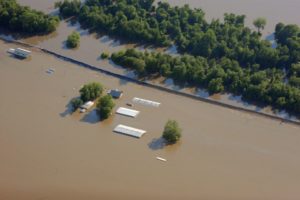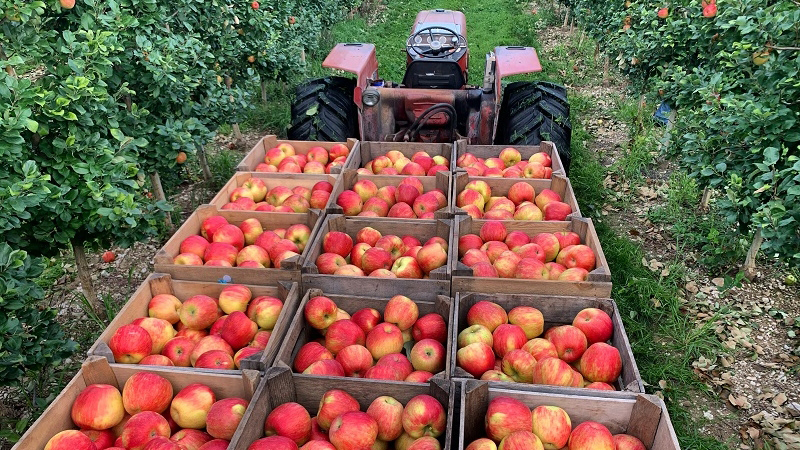What Next? What To Do After A Natural Disaster At Your Farm
 Three weeks after Hurricane Katrina hit in 2005, a friend of mine had his garden center all but destroyed by Hurricane Rita.
Three weeks after Hurricane Katrina hit in 2005, a friend of mine had his garden center all but destroyed by Hurricane Rita.
My friend, Roy Henslee, decided to wait out the storm in his Victorian-era house, since it had obviously survived many other storms over the years. The house was on the store property, near his 14 greenhouses. The storm was much worse than he expected, with transformers blowing out nearby, and the alarm on his growing office blaring for hours after its roof blew off, and the sound of trees falling keeping him up all night, waiting for the next to break through his walls and roof.
The next morning, he emerged to chaos. A gator he had stashed under a sturdy shelter was crushed by a pecan tree. Most of his greenhouses were mangled, although some held delicate plugs, still sitting in orderly rows on their benches.
After touring the garden retail side of the business and seeing that the retail greenhouse was on the ground, and all the additional inventory placed in there for safe keeping was gone, he went back to his porch, despondent.
Then he placed a call to a friend and consultant, who got him in touch with Florida growers who had made it through their own storms.
The advice he received, and the lessons he learned over the next few weeks were key to his being about to re-opening his business six weeks later and generating the needed cash flow he and his employees needed to stay afloat.
If you find yourself in a similar place as Roy, here’s a list of steps you’ll want to take, gleaned not only from my friend, but also experts writing for Forbes, Entrepreneur, and other leading magazines.
- Document, Document, Document. The first, and perhaps most important advice Roy received in that fateful phone call was to photograph everything. “The grower — I don’t remember his name, unfortunately — told me you only have one chance to photograph the damage. He told me to resist the urge to begin cleaning up, and instead to document everything that happened,” he said.
That advice, Roy said, was essential to filing claims with his insurance company and applying for disaster loans. - Notify your insurance company in writing. The Property Insurance Law Blog points out that after a major storm hits, the insurance company is inundated with calls. After Hurricane Sandy the insurance companies hired temps to handle the volume. Many of them were not up to date on policies and mistakes were made.
- Make sure an expert does the inspection. In another article on Property Insurance Law Blog, the writer points out the possibility for hidden damage. Shingles blown off the roof may indicate that the storm lifted the roof partially, significantly damaging it, before it settled back in place with its damage hidden. An expert will be able to identify these easily overlooked claims you should be making.
- Do your homework before applying for a low-interest disaster loan. My friend Roy wouldn’t have been able to reopen without a Small Business Administration [SBA] disaster loan, since he had a problem with his insurance policy.
As Forbes puts it: “Disaster assistance is money provided to individuals, families and businesses in an area whose property has been damaged or destroyed following a Presidential-declared disaster; and whose losses are not covered by insurance. Loans may be available to businesses that have suffered an economic loss as a result of the disaster.”
There are two points he thought fellow grower/retailers should understand before applying for a disaster loan. First, realize that you are taking on debt during a vulnerable time. Yes, it’s a long-term debt and low-interest, but it does add to your financial burden. Second, understand that the disaster loan division of either the USDA or SBA are completely different from the division you are used to dealing with. It will be a different agent and office that the contact you may already have on file.
On a side note, Roy learned that which division of the government you apply to depends on how much your own produce or plants contribute to your total annual sales. In 2005, the rule was that if you earned more than 25% of your annual income directly from what you grew, then you should apply to the USDA. As a garden retailer, Roy supplemented his own plants with other growers’, as well as non-green goods. His annual sales from his own plants was just shy of 25%, so he applied to the SBA. - If you have water damage, take your computers to experts to recover data. Even trying to turn the computer on once as a test can hurt your chances of recovering your data, the Polygon Group says. When it comes to electronically stored data, resist the urge to fix it yourself. If you do, you can lose it permanently.
- Be careful about what you sign. Following a natural disaster, you’ll be asked to sign a lot of documents, the Property Insurance Law Blog points out. Unfortunately, a lot of disreputable “contractors” tend to follow natural disasters. Some merely are unlicensed, which can disqualify the work for insurance purposes. Others are out to commit fraud and will try to take over your claim.
Helpful Links
Forbes offered a great list of links business owners will want to have after a natural disaster:
Online Questionnaire and Application For Assistance
Farm Services Agency Disaster Assistance
SBA Economic Injury Disaster Loans
Instructions on Cleaning Up after a Hurricane
Precautions to Take Returning to Your Office
Tips on Recovering from a Hurricane








